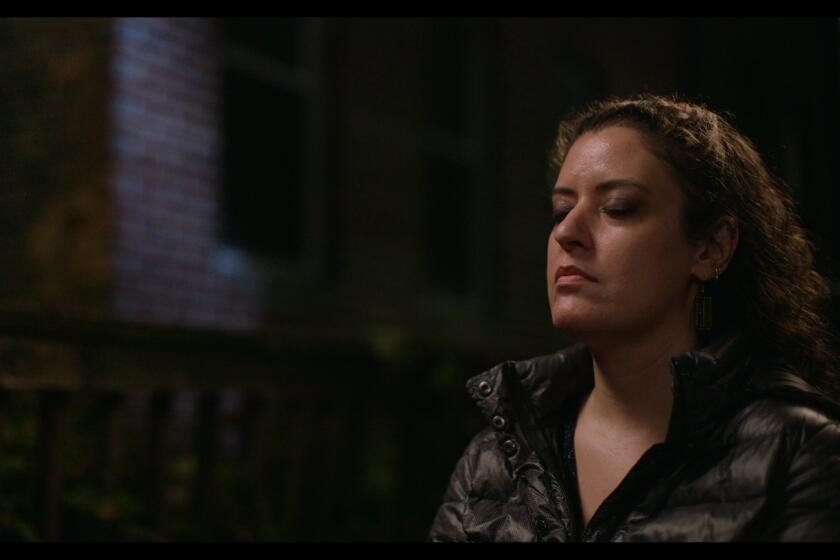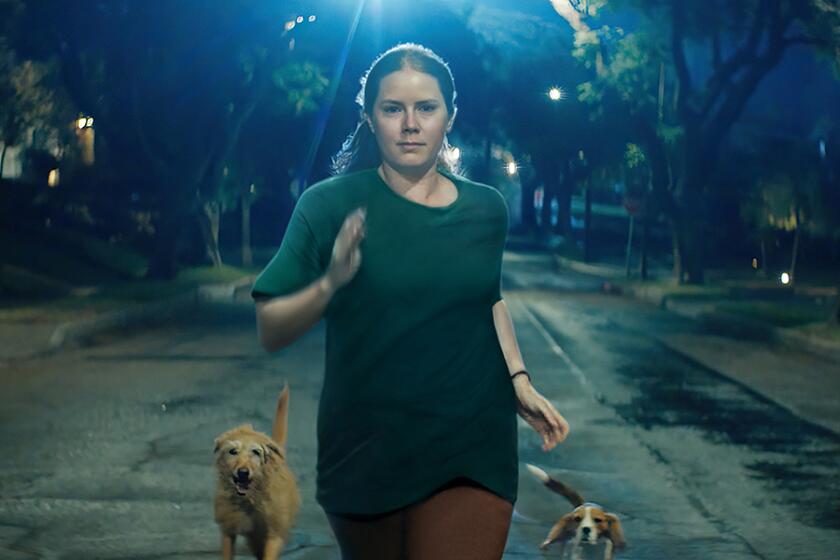Rome Film Festival salutes Andrzej Wajda with his final film, ‘Afterimage’
A melancholy round of applause greeted the first Rome Film Festival screening on Friday of “Afterimage,” the stark, solemn final film directed by the Polish master Andrzej Wajda. Before his death on Sunday at the age of 90, Wajda had been expected to attend the festival and participate in a conversation about his body of work — which, encompassing films such as “Kanal” (1956), “Ashes and Diamonds” (1958) and “Katyn” (2007), remains as probing and prolonged an immersion in a nation’s tragic history as any filmmaker has ever produced.
“Afterimage,” while not one of the high points of Wajda’s celebrated career, nonetheless provides a fitting capstone. Previously unveiled at festivals in Toronto and Gdynia, Poland, the film is a direct, dramatically muted portrait of the painter Władysław Strzemiński (played by Boguslaw Linda), who thrived in the early 20th century as a leader of the Soviet-spawned Constructivist avant-garde movement.
For the record:
12:40 p.m. Sept. 19, 2024Typographical error corrected. “Solitary movement” changed to “Solidarity movement.”
Audiences unfamiliar with Strzemiński’s name and work will receive only faint illumination from the film, which concentrates on the embattled last four years of his life (1948-52), starting with his vocal rejection of the Stalinist crackdown on abstract, formalist art in favor of a strict code of socialist realist propaganda.
What follows is a chronicle of slow, agonizing bureaucratic punishment. Step by step, Wajda shows how Strzemiński, though beloved by his admirers and students, is removed from his intellectual sphere — stripped of his teaching position at the School of Visual Arts in Lodz (which he had co-founded), and forced to watch as his paintings are ripped from their galleries and even destroyed. And then, in a final twist of the knife, Strzemiński is removed from life altogether, robbed of every last coin, morsel of food and scrap of dignity by a government that had once supported him.
As a tribute from one dissident artist to another, “Afterimage” holds up a cruel counter-history of sorts to Wajda’s own career. Although the director often faced criticism and censorship for daring to confront head-on the injustices of Polish communism and the rise of the Solidarity movement, with films like “Man of Marble” (1977) and its Palme d’Or-winning sequel, “Man of Iron” (1981), his reputation as a popular artist and steadily growing international audience ensured him freedom from the sort of persecution that Strzemiński experienced.
Wajda’s signature interweaving of fictional and newsreel footage — recently seen to brashly assured effect in “Walesa: Man of Hope,” his excellent 2013 portrait of the Solidarity leader Lech Walesa — is nowhere to be found in the grim, straightforward death march of “Afterimage.” Odd as it is to see a defense of the abstract and the avant-garde told in such a staidly linear, classical manner, the sting of the movie’s political rebuke is clear and unmistakable.
The titular reference to Strzemiński’s late-1940s solarist paintings, “Afterimages of the Sun,” is spelled out in an early scene, when the painter defines an “afterimage” as the color-reversed imprint that remains on the human retina even after the original image has faded. It’s a fitting metaphor from a filmmaker whose own art, in holding up a dark mirror to dark times, will continue to resonate and linger.
“Afterimage” wasn’t the only festival title heavily overshadowed by the specters of death, isolation and repressive ideology. In “Layla M.,” the writer-director Mijke de Jong charts a grim course for her anti-heroine, Layla (Nora El Koussor), a Dutch-Moroccan teenager who, becoming increasingly radicalized in her Muslim faith, abandons her family in Amsterdam to marry a jihadist, Abdel (Ilias Addab). Upon relocating with her new husband to Amman, Jordan, however, Layla finds herself trapped a culture in which she has no more of a place than she did back in Amsterdam.
What makes de Jong’s film intriguing, despite its fairly predictable downward spiral, is the way it places a devout yet decidedly non-submissive young woman in conflict with a code of belief that ultimately treats her piety as second-class. Exactly what Layla thought she was getting herself into when she married Abdel remains a fair question, but it’s adroitly sidestepped by El Koussor’s sharp performance as a follower whose fierce outspokenness, uninhibited physicality and love for soccer don’t fit anyone’s idea of a standard character template.
All in all, the Rome program has not been lacking in portraits of women in extreme isolation. Screened for festival-goers here a day before its New York Film Festival premiere, “Everything Else,” a fiction feature debut for the documentary filmmaker Natalia Almada, is a deliberately framed study of an unsmiling Mexican government clerk named Dona Flor (Adriana Barraza, an Oscar nominee for “Babel”).
This Dona Flor doesn’t have two husbands, or even one husband — or, for that matter, any family or friends to speak of. With only a cat at home for company, she spends her days meticulously scrutinizing the applications and faces that pass before her desk, quietly seeking — and invariably finding — the technical slips that will enable her to deny each person’s request. The result is a bitter, slow-burning indictment of bureaucratic cruelty undercut by stray, dreamlike glimpses of the swimming pool where Dona spends her free time, seeking a sense of community and transcendence that will never come.
“Everything Else” would make a nifty double bill with “Louise by the Shore,” a similarly low-key but far less depressing study in semi-aquatic solitude. Directed by Jean-François Laguionie, this lyrical and beguiling French-Canadian animation follows the adventures of an old woman who, after a summer vacation by the sea, misses the last train out of town and finds herself forced to wait out the winter. Her resourcefulness, surprising toughness and ability to find friends in unexpected places make this a charming septuagenarian spin on “Robinson Crusoe,” but what gives the film its lift is its gently surreal trip through Louise’s memories, compressing a lifetime of joy and sorrow into 75 minutes.
justin.chang@latimes.com
More to Read
Only good movies
Get the Indie Focus newsletter, Mark Olsen's weekly guide to the world of cinema.
You may occasionally receive promotional content from the Los Angeles Times.











